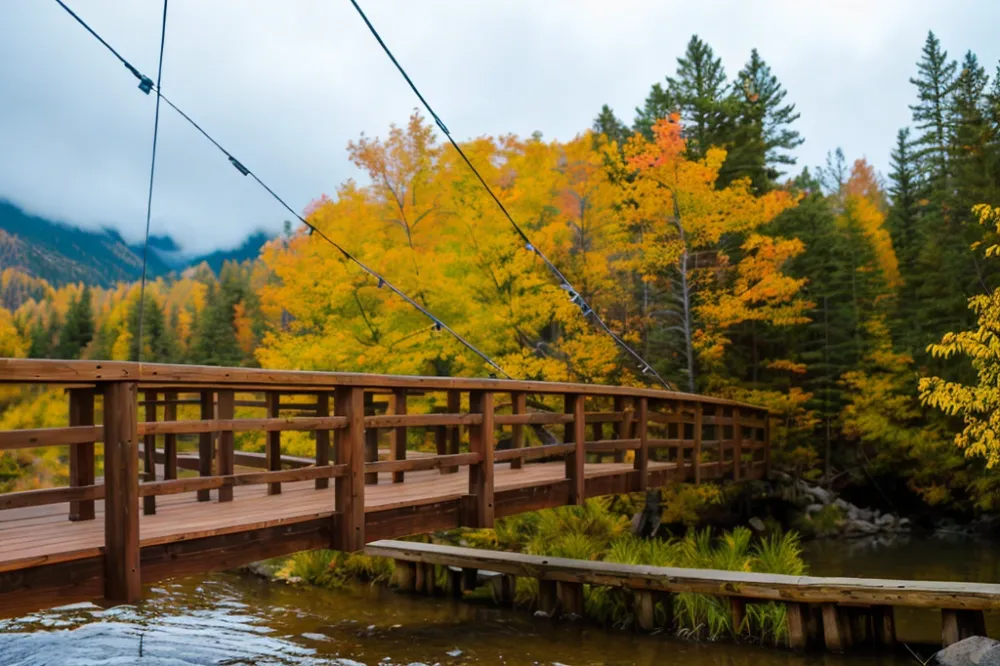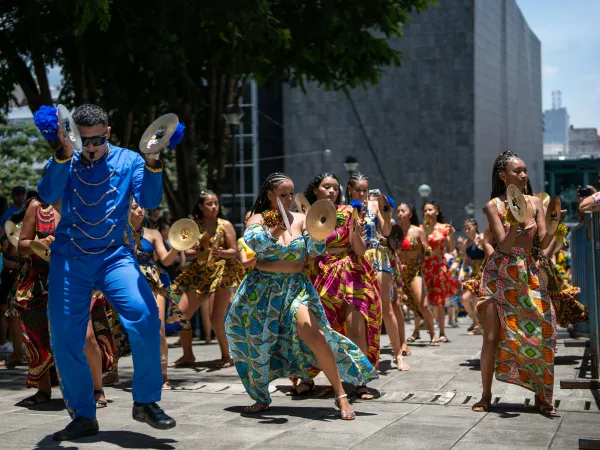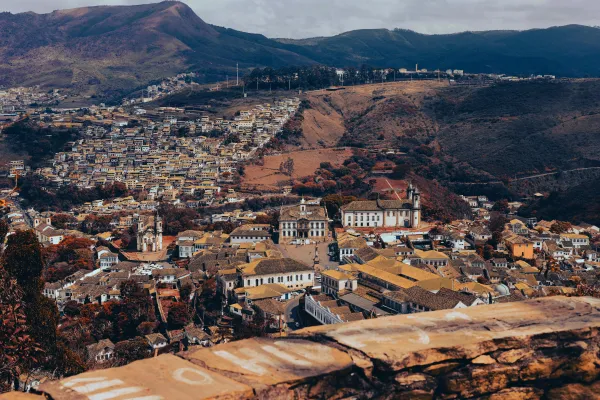19 Unique Things To Do In Ironwood
Ironwood's history is rooted in the rugged landscapes of Michigan’s western Upper Peninsula, where iron ore deposits in the Gogebic Range fueled rapid growth in the late 19th century. Founded in 1885 and named after mining pioneer James “Iron” Wood, the city quickly became a boomtown, attracting immigrants from Finland, Italy, Poland, and other European countries who brought their cultural traditions to the Northwoods. The mines, along with the logging industry, shaped the local economy and forged a resilient, close-knit community.
By the early 20th century, Ironwood was a bustling industrial center, with railroads, theaters, and grand civic buildings reflecting its prosperity. When the mines began to close in the mid-1900s, the city reinvented itself, focusing on tourism, outdoor recreation, and preservation of its cultural heritage. Today, Ironwood offers a blend of historic landmarks, arts venues, and access to the forests, rivers, and lakes that define the Upper Peninsula. From restored downtown architecture to ski hills and scenic overlooks, it’s a place where the area’s mining legacy lives alongside a thriving outdoor lifestyle. For visitors, Ironwood is both a gateway to the western U.P.’s natural wonders and a town with a story carved into its landscape.
1. Historic Ironwood Theatre
Important Information
- 📍 Address: 113 E. Aurora Street, Ironwood, MI 49938
- 🕒 Best Time to Visit / Hours: Hosts concerts, performances, and tours year-round; check website or local listings for upcoming shows.
- 💲 Pricing: General admission varies by event; tours and community performances often priced affordably.
- ♿ Accessibility: Restored historic venue with good acoustics and theater amenities.
- 📍 Nearby Attractions: Situated in downtown—easy access to nearby shops, dining, Memorial Building, and Depot Park.
- 📞 Contact Info: Likely via City of Ironwood or theater site listed on Michigan tourism pages.
The Historic Ironwood Theatre is a cultural landmark that has been entertaining audiences since it first opened its doors in 1928. Built during the golden age of movie palaces, the theater originally showcased silent films and vaudeville acts before transitioning to “talkies” and live stage productions. Its architecture reflects the opulence of the era, with ornate plasterwork, a grand proscenium arch, and period lighting fixtures that have been carefully preserved.
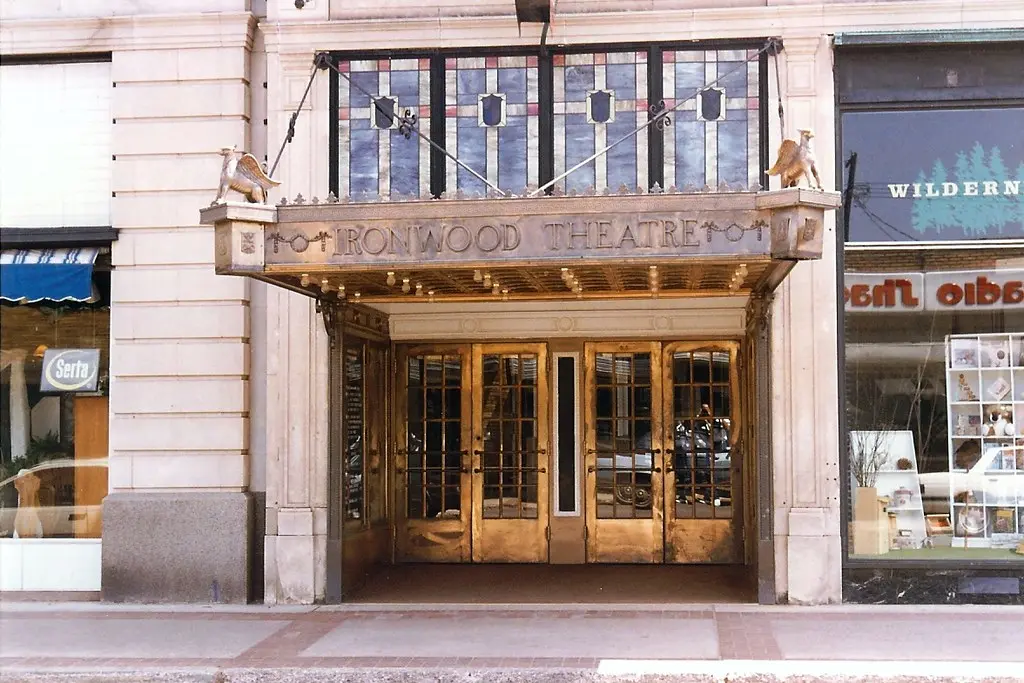
After falling into disrepair in the late 20th century, the theater was restored through a community-driven effort, reopening as a nonprofit venue dedicated to the performing arts. Today, it hosts a diverse calendar of events, including concerts, stage plays, classic film screenings, and community performances. The original Barton organ—one of the few remaining of its kind—still fills the hall with music during special events. For visitors, the Historic Ironwood Theatre offers not just entertainment, but also a step back into the elegance and craftsmanship of early 20th-century performance spaces.
2. Hobby Wheel
Important Information
- 📍 Address: 1435 E. Cloverland Drive, Ironwood, MI 49938
- 🕒 Hours: Monday–Friday: 9 AM–5 PM; Saturday: 9 AM–4 PM; Closed Sunday.
- 💲 Pricing: Retail—varied; rentals for skis, snowboards, bikes have market-based rates.
- ♿ Accessibility: Modern retail location—likely accessible.
- 📍 Nearby Attractions: Serves local and tourist outdoor needs; useful stop before heading to natural attractions.
- 📞 Contact Info: (906) 932‑3332.
Hobby Wheel is Ironwood’s go-to destination for cycling enthusiasts, whether you’re a casual rider, a mountain biker, or someone looking to explore the local trails. The shop offers a full range of bicycles for sale, from entry-level models to high-performance machines, as well as accessories, apparel, and parts. Skilled mechanics provide repairs, tune-ups, and custom builds, ensuring riders get the most out of their gear.
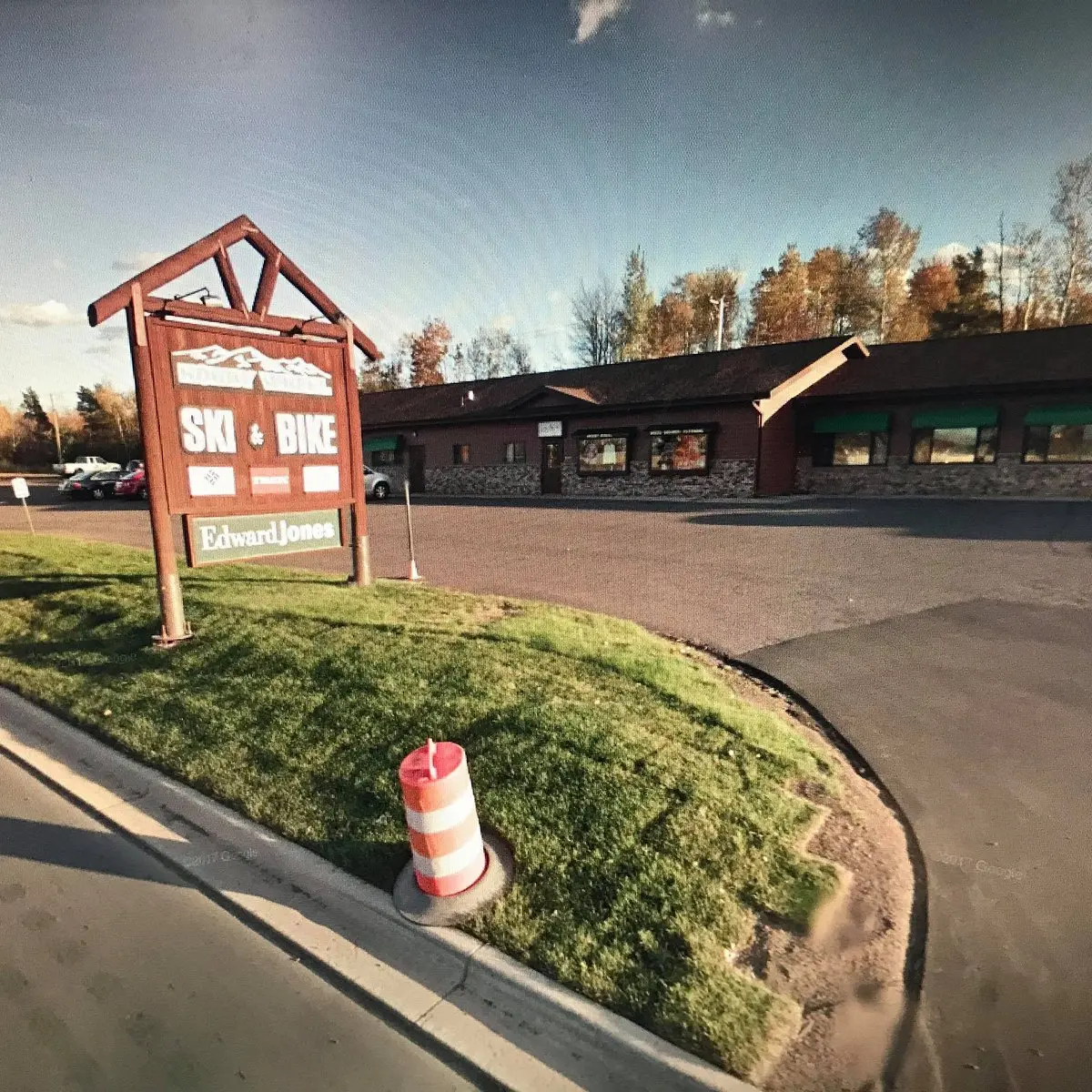
Staff members are known for their knowledge of regional cycling routes, often recommending the best paths along the Iron Belle Trail or scenic rides through the Ottawa National Forest. Hobby Wheel also supports the local biking community by participating in charity rides and events that encourage outdoor activity. For travelers, it’s an excellent stop to rent or purchase equipment before setting out to explore Ironwood’s trails; for locals, it’s a trusted resource that keeps the wheels turning year-round.
3. European Treats
Important Information
- 📍 Address: 124 E. Aurora Street, Ironwood, MI (downtown area)
- 🕒 Hours: Not listed online—likely standard daytime retail hours.
- 💲 Pricing: Gourmet imported foods; prices vary by specialty items.
- ♿ Accessibility: Downtown location with accessible entry.
- 📍 Nearby Attractions: Conveniently near Historic Ironwood Theatre and other downtown spots.
- 📞 Contact Info: Details found on their Facebook page.
European Treats is a specialty grocery in Ironwood that brings the flavors of Eastern and Central Europe to Michigan’s Upper Peninsula. Stocked with imported chocolates, candies, teas, spices, and pantry staples, it’s a small shop with a distinctly international atmosphere. Many items are sourced directly from countries such as Poland, Germany, Ukraine, and the Baltic states, offering products rarely found in mainstream supermarkets.
Beyond sweets, shelves often feature pickled vegetables, specialty meats, artisanal breads, and bottled mineral waters that evoke the culinary traditions of Europe. The owners are known for sharing knowledge about the origins of their goods, making it a place to discover new flavors or revisit tastes from one’s heritage. Seasonal holidays bring in limited-edition treats, from German Lebkuchen in winter to Eastern European cookies in spring. For visitors, European Treats offers an unexpected cultural experience in Ironwood—proof that even in a small Upper Peninsula town, global flavors can be just around the corner.
4. Olde Suffolk Ale House
Important Information
- 📍 Address: 125 S. Suffolk Street, Ironwood, MI 49938
- 🕒 Hours:
- Wednesday: 11 AM–1 PM & 5–7 PM
- Friday & Saturday: 4:30–8 PM
- Closed other days.
- 💲 Pricing: Casual-dining prices; serves Italian-American fare, tap beers, wine, and mixed drinks.
- ♿ Accessibility: Located in a historic building downtown—assumed accessible.
- 📍 Nearby Attractions: Close to other downtown highlights like the Theatre and Library.
- 📞 Contact Info: (906) 932‑3198.
Olde Suffolk Ale House is a cozy restaurant and pub in Ironwood that blends a laid-back atmosphere with hearty, flavorful fare. Styled after a traditional alehouse, it features a warm interior with wood accents, vintage décor, and a friendly bar stocked with a rotating selection of craft beers, both local and national. The menu leans toward classic comfort foods—burgers, sandwiches, steaks, and seafood—often prepared with a creative twist.
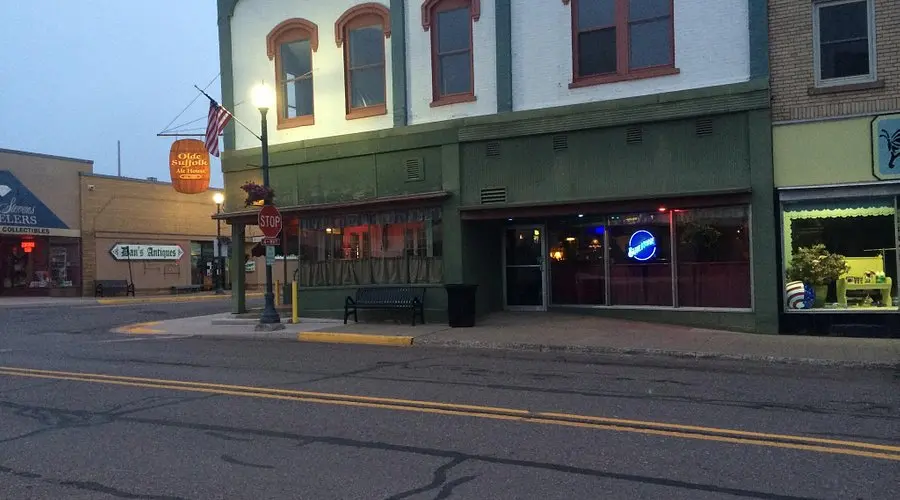
Regulars come for signature dishes and generous portions, while first-time visitors are drawn by the welcoming vibe and attentive service. The Ale House is also a gathering place for community events, hosting trivia nights, live music, and special holiday menus. While not a historic building, it has built a reputation as a modern local landmark where travelers can get a true taste of Ironwood’s hospitality. For those exploring the city or returning from nearby trails and parks, Olde Suffolk Ale House offers a satisfying meal and a pint in a setting designed for lingering.
5. City of Ironwood Memorial Building
Important Information
- 📍 Address: McLeod Avenue & Marquette Street, Ironwood, MI
- 🕒 Best Time to Visit: Self-guided tours available anytime during public hours.
- 💲 Pricing: Free public building.
- ♿ Accessibility: Monumental neoclassical stone/marble structure housing municipal offices, auditorium, pool, gym, stained glass, murals, and exhibits.
- 📍 Nearby Attractions: A cornerstone of downtown’s civic and cultural life—walking distance to other attractions.
- 📞 Contact Info: City of Ironwood administration; details available via municipal channels
The City of Ironwood Memorial Building is more than a municipal office—it’s one of the city’s most architecturally significant landmarks. Completed in 1923, the structure was built to honor local veterans of World War I and to serve as a civic hub. Designed in a Classical Revival style, the building features limestone detailing, grand staircases, and large arched windows that give it a sense of dignity and permanence.
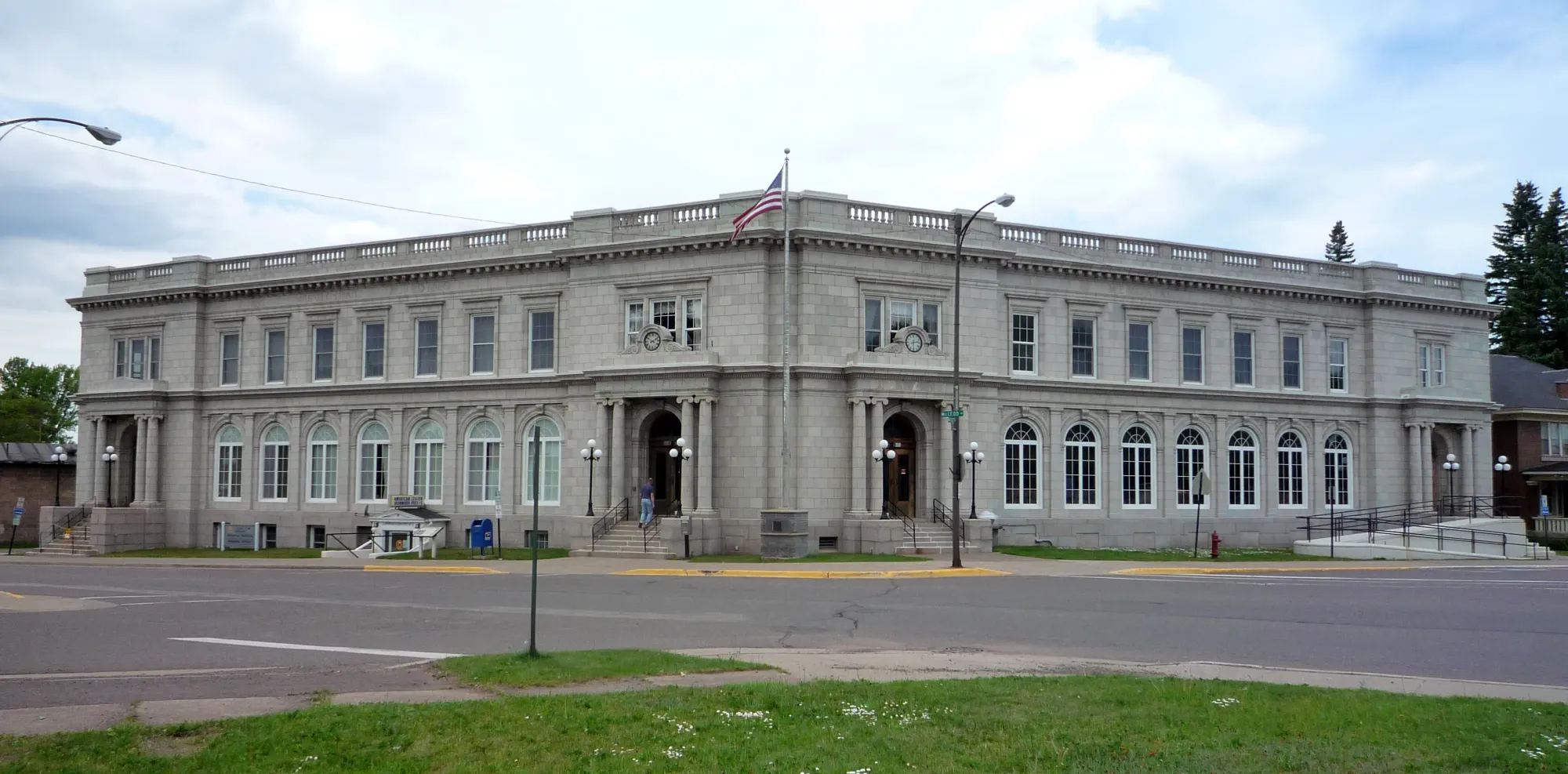
Inside, a spacious auditorium has hosted everything from community meetings and performances to political gatherings and social dances. Memorial plaques and displays honor Ironwood residents who served in the armed forces, making it both a functioning city building and a place of remembrance. Over the years, it has been a backdrop to civic life, bridging nearly a century of Ironwood’s history. For visitors, the Memorial Building offers a glimpse into the city’s postwar optimism and its long-standing tradition of honoring service while fostering community engagement.
6. Ironwood Carnegie Library
Important Information
- 📍 Address: 235 East Aurora Street, Ironwood, MI 49938
- 🕒 Hours:
- Monday & Friday: 9 AM – 5 PM
- Tuesday & Thursday: 12 PM – 6 PM
- Saturday: 9 AM – 12 PM
- Closed Wednesday & Sunday
- 💲 Pricing: Free admission; richly historic with programs and community events
- ♿ Accessibility: Building features original design with modern programming—check ahead for specific accessibility details
- 📍 Highlights:
- The oldest continuously operated Carnegie Library in Michigan, built in 1901 and listed on the National Register of Historic Places
- It retains original furnishings including the circulation desk and chairs
- 📞 Contact Info: Phone: 906‑932‑0203; Email: Lynne@ironwoodcarnegie.org
The Ironwood Carnegie Library holds the distinction of being the oldest continuously operating Carnegie Library in Michigan, opening its doors in 1901. Funded by a grant from steel magnate and philanthropist Andrew Carnegie, the library was part of a nationwide movement to expand public access to books and education at the turn of the 20th century. Built in a Neoclassical style, the building features a symmetrical façade, classical columns, and large windows that flood the reading rooms with natural light.
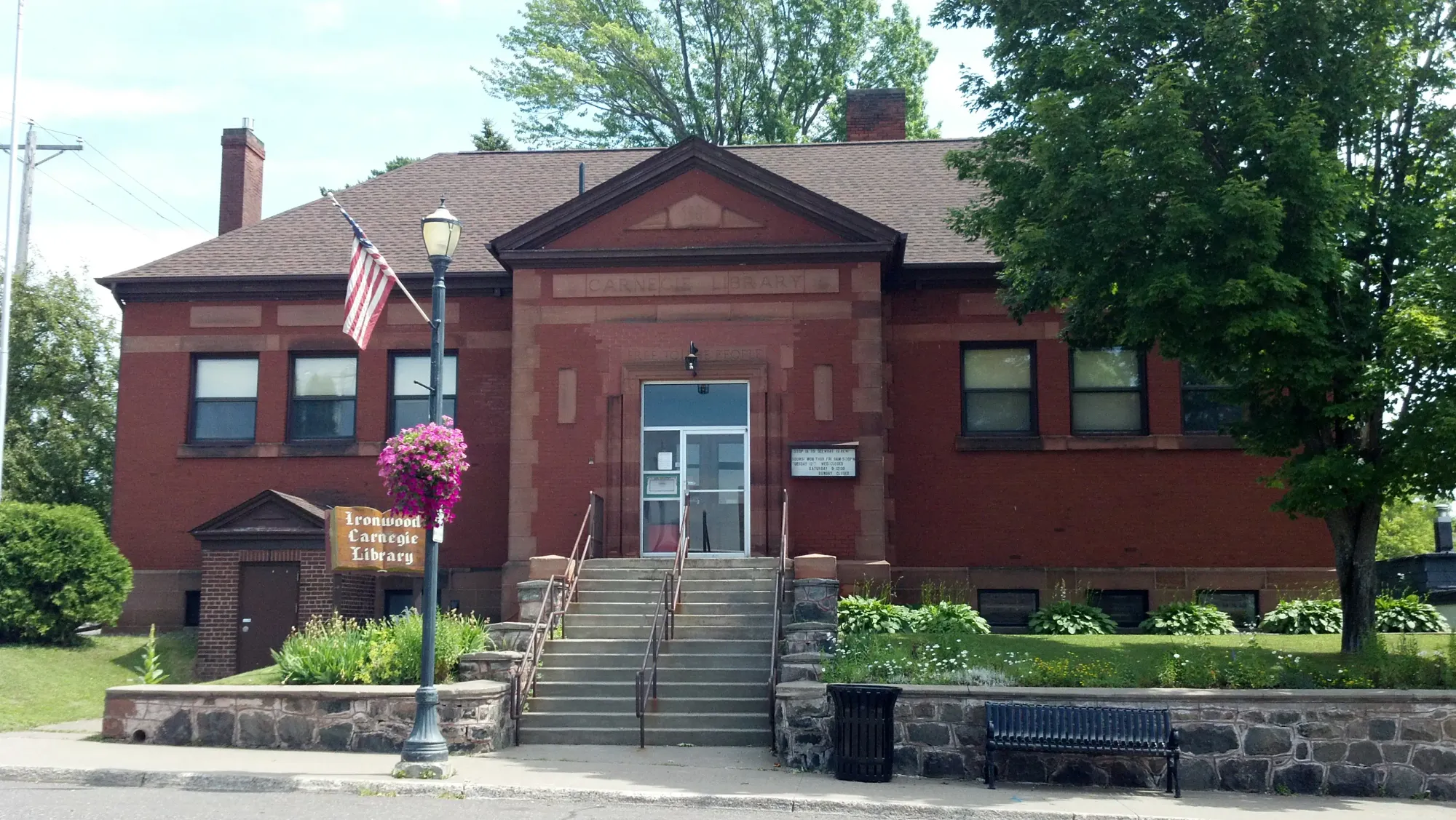
Inside, original woodwork and historic fixtures maintain its period charm, even as modern technology and services have been integrated. Beyond lending books, the library serves as a cultural hub, hosting author talks, workshops, and children’s programs. Archival materials document Ironwood’s mining history, offering researchers and history buffs valuable resources. For travelers interested in architecture, local history, or simply a quiet place to read, the Ironwood Carnegie Library is both a functional institution and a living piece of American library history.
7. Downtown Art Place
Important Information
- 📍 Address: 111 East Aurora Street, Ironwood, MI 49938
- 🕒 Hours: Tuesday–Sunday: 12 PM – 4 PM; Closed Mondays
- 💲 Pricing: Free to browse and enjoy exhibitions
- ♿ Accessibility: Located on street level downtown—accessibility assumed good
- 📍 Highlights:
- A hub for creative arts with over 20 artist studios upstairs and a public art shop on the ground floor
- Hosts regular exhibits, classes, and events
- 📞 Contact Info: (906) 285‑7300
Downtown Art Place is a community-driven art gallery and studio space that has become a focal point for Ironwood’s cultural revival. Located in the historic Memorial Building complex, it was founded to give local and regional artists a venue to exhibit, sell, and create their work. The gallery features rotating exhibitions that cover a range of media—painting, photography, sculpture, ceramics—showcasing both emerging talent and established creators. Studios within the space allow artists to work on-site, often inviting visitors to watch the creative process or discuss techniques.
Workshops and art classes are offered for all ages, fostering an environment where art is not just displayed but actively made and shared. The location’s proximity to the Historic Ironwood Theatre and other downtown landmarks makes it a natural stop for those exploring the city’s arts district. For travelers, Downtown Art Place offers an authentic glimpse into the region’s creative spirit, while also serving as a place to take home a piece of locally made art.
8. Norrie Park
Important Information
- 📍 Location: One of several parks in Ironwood; part of city parks network
- 🕒 Best Time to Visit: Outdoor recreation—ideal during warmer seasons for play and picnics
- 💲 Pricing: Free park access
- ♿ Accessibility: Includes playground and walking areas, maintained by city
- 📍 Highlights: Family-friendly play areas and green spaces within the city’s park system
Norrie Park is a 100-acre green space that blends recreational amenities with a deep connection to Ironwood’s mining heritage. The park sits on land once occupied by the Norrie Iron Mine, one of the area’s most productive operations in the late 19th and early 20th centuries. After mining ceased, the land was reclaimed and transformed into a public park, offering walking trails, picnic areas, playgrounds, and river access for fishing or paddling.
Interpretive signs along the trails highlight the site’s industrial past, giving visitors a sense of how Ironwood’s economy and landscape have evolved. Seasonal events, such as community picnics and outdoor concerts, make it a gathering place for residents. In autumn, the park’s wooded areas put on a vibrant display of fall colors, drawing photographers and nature lovers. For visitors, Norrie Park is both a recreational escape and a living reminder of how the city’s mining history has been reshaped into spaces for community life.
9. Miners Memorial Heritage Park
Important Information
- 📍 Location: Near downtown; tribute within the Ironwood community
- 🕒 Best Time to Visit: Anytime; especially poignant during memorial or heritage-focused events
- 💲 Pricing: Free public memorial
- ♿ Accessibility: Outdoor memorial area—likely accessible outdoors
- 📍 Highlights: Honors Ironwood’s mining history; often associated with other downtown heritage features like murals and historic structures
Miners Memorial Heritage Park is a vast green corridor dedicated to preserving and interpreting Ironwood’s iron mining heritage. Once home to multiple active mine sites, including the massive Norrie and Aurora mines, this land was transformed into a public space after mining ceased in the mid-20th century. The park’s trails follow former rail lines and haul roads, connecting interpretive signs, memorials, and remnants of mining infrastructure.
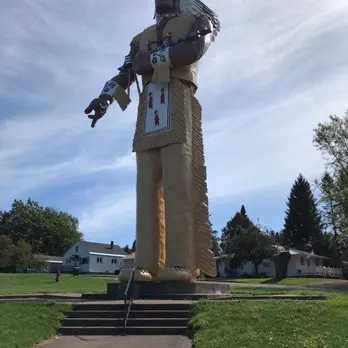
The Miner’s Memorial, a striking focal point, honors the thousands of men who worked in the Gogebic Range mines—many of them immigrants whose labor fueled the region’s growth. Seasonal events like the SISU Ski Fest and outdoor summer performances bring life to the park year-round. Visitors can hike, bike, or ski the interconnected trails while learning about the industry that shaped Ironwood’s economy, culture, and identity. It’s a place where recreation and history blend seamlessly, offering both reflection and activity.
10. Iron Belle Trailhead
Important Information
- 📍 Address: Along Iron Belle Trail at approximately 150 North Lowell Street, Ironwood, MI
- 🕒 Best Time to Visit: Anytime—great for hiking, biking, or cross-country skiing year-round
- 💲 Pricing: Free public trail access
- ♿ Accessibility: Paved, beginner-friendly; well-marked path through forested overlooks and historic sites
- 📍 Highlights: Begins in Ironwood, connects to Bessemer (approx. 11 miles one-way), versatile for walkers, cyclists, and snowshoers
The Iron Belle Trailhead in Ironwood marks the start of one of Michigan’s most ambitious trail systems, the Iron Belle Trail, which stretches more than 2,000 miles from the western Upper Peninsula to Belle Isle in Detroit. The trailhead features interpretive signage, a welcoming plaza, and connections to local walking and biking paths, making it an ideal starting point for outdoor adventures. In Ironwood, the route follows segments of former rail lines, giving cyclists and hikers a smooth, scenic path through forests, wetlands, and historic neighborhoods.
The trail is used year-round, with cross-country skiing and snowshoeing popular in winter. As a gateway to the broader trail system, the Iron Belle Trailhead connects Ironwood to communities across the state, symbolizing the city’s role as both a starting point and a destination. For visitors, it offers easy access to explore the natural beauty of the western U.P. while being only steps away from downtown amenities.
11. Pat O’Donnell Civic Center
Important Information
- 📍 Address: Gogebic Community College Campus (with Mt. Zion)
- 🕒 Hours: Hosts ice events and is open year-round depending on activities
- 💲 Pricing: Free entry to public events; facility rental or tickets may vary
- ♿ Accessibility: Newly rebuilt in 2020, accessible with modern restrooms, infrared heated seating, and spacious event areas
- 📍 Highlights: Multi-use ice arena and event center ideal for hockey, skating, trade shows, and community events
The Pat O’Donnell Civic Center is Ironwood’s primary indoor arena, serving as a hub for sports, community events, and live entertainment. Built in 1989 and named after a beloved local coach and educator, the facility reflects Ironwood’s strong tradition of winter sports and community gatherings. The arena’s ice rink is home to local hockey teams, figure skating programs, and open skate sessions that draw families throughout the season.

In the warmer months, the ice comes out, and the space transforms for trade shows, concerts, and large community celebrations. Renovations in recent years have modernized the building, improving seating, locker rooms, and event facilities while maintaining its role as an accessible, family-friendly venue. For residents, the Civic Center is a year-round meeting place; for visitors, it offers a chance to catch a game, join in a seasonal festivity, or experience the energy of local sports culture in Ironwood.
12. Copper Peak
Important Information
- 📍 Address: N. Black River Valley Parkway, near Ironwood, MI
- 🕒 Best Time to Visit: Adventure Ride operates late spring through fall; full ski jump events to resume post-renovation (targeted completion by end of 2026)
- 💲 Pricing: Adventure Ride ticketed; full facility free to view, pricing for special events TBD
- ♿ Accessibility: Observation platforms accessible via chairlift and elevator; some levels open for climbers
- 📍 Highlights:
- Only ski-flying hill in the Western Hemisphere
- 469-foot structure, perched atop Chippewa Hill (~360 feet above surrounding terrain)
- Recently renovated—future host for international ski events
Copper Peak is one of Ironwood’s most distinctive landmarks and a globally recognized ski flying hill—the only one of its kind in the Western Hemisphere. Built in 1969 on a bluff overlooking the Black River Valley, the structure rises more than 240 feet above the ground, offering panoramic views that stretch up to 40 miles on a clear day, including glimpses of Lake Superior. While ski flying competitions were held here in the 1970s and 1980s, the site now operates primarily as a tourist attraction, with an elevator and staircase leading visitors to the observation deck.
Plans to restore Copper Peak for international ski flying events have been in motion in recent years, which would once again place Ironwood on the global winter sports stage. Even without snow, the site draws outdoor enthusiasts for its hiking and biking trails. For travelers, a trip to Copper Peak combines natural beauty, sporting history, and a view you won’t find anywhere else in the Midwest.
13. Mt. Zion Ski Hill
Important Information
- 📍 Address: E4946 Jackson Road, Ironwood, MI (on Gogebic Community College campus)
- 🕒 Hours: Seasonal operation; evening hours on weekends (Fridays, Saturdays), plus daytime availability; observation deck accessible summer/fall
- 💲 Pricing: Affordable rates for skiing, snowboarding, tubing; GCC students and seniors may ski free
- ♿ Accessibility: Offers sledding, disc golf (free 18-hole course), and a handicap-accessible overlook deck
- 📍 Highlights:
- Offers downhill, snow tubing, cross-country, and sledding trails
- Scenic overlook for panoramic views; summer activities include disc golf and biking
Mt. Zion Ski Hill is both a recreational hub and an educational resource, operated by Gogebic Community College as part of its Ski Area Management program. Established in the 1950s, it has trained generations of ski industry professionals while providing affordable winter fun for the local community. The hill offers a mix of beginner and intermediate slopes, making it ideal for families, first-time skiers, and snowboarders.
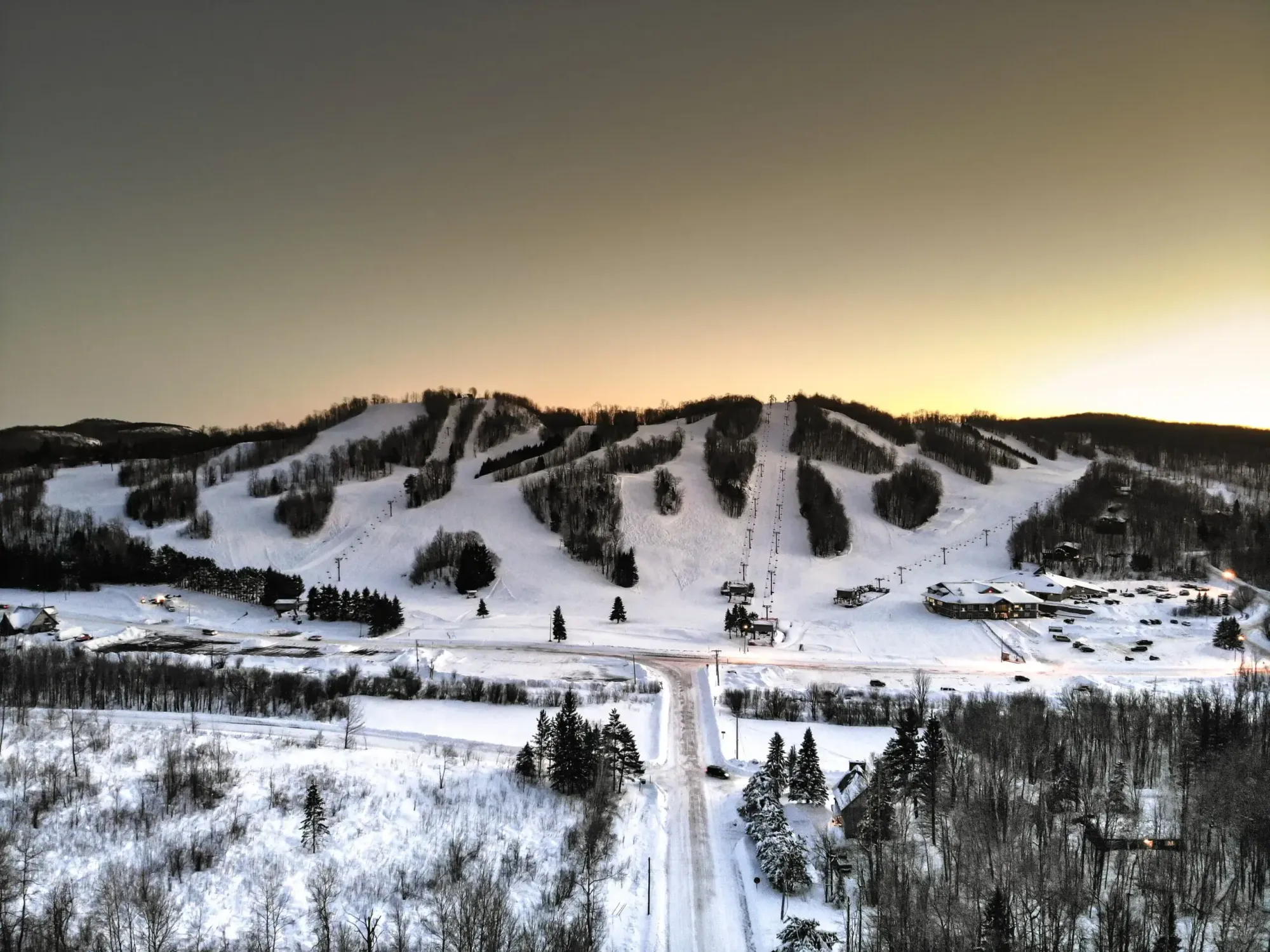
A terrain park adds variety for freestyle riders, while a tubing hill provides non-skiers with their own thrill. Instructors from the college program often lead lessons, ensuring visitors benefit from knowledgeable, hands-on instruction. In summer, Mt. Zion transforms into a scenic overlook and mountain biking destination, with trails winding through the surrounding forest. Its combination of community focus, affordability, and scenic location makes Mt. Zion a year-round Ironwood favorite for both residents and travelers.
14. Little Girls Point County Park
Important Information
- 📍 Address: E1930 Lake Road, Ironwood, MI 49938
- 🕒 Best Time to Visit: Ideal spring through fall for camping, rock hunting, sunset-viewing; winter offers dramatic ice formations
- 💲 Pricing: Campground with 29 electric and 2 non-electric sites; reasonable fees apply
- ♿ Accessibility: Rustic park with trails, picnic pavilions, playground, potable water tank (no direct hookups or dump station)
- 📍 Highlights:
- Cobblestone beach along Lake Superior, great for agate hunting and serene views
- Camping, playground, picnic shelters, and beach access—Porcupine Mountains visible across the lake
Little Girls Point County Park is a stunning stretch of Lake Superior shoreline located just north of Ironwood. Known for its wide, pebbled beaches and dramatic sunsets, the park is a favorite for beachcombing, swimming, and camping. The shoreline here is famous for agate hunting, attracting rock enthusiasts eager to find the colorful stones shaped by centuries of wave action. Campsites and picnic areas overlook the water, offering some of the most scenic spots in the Upper Peninsula.
The park’s name is believed to originate from a local Ojibwe legend, adding a layer of cultural history to its natural beauty. Seasonal storms can transform the landscape, creating ever-changing patterns along the shore. For visitors, Little Girls Point offers a direct connection to the raw beauty of Lake Superior, whether it’s a quiet morning walk, an afternoon swim, or an evening watching the sky blaze with color as the sun dips below the horizon.
15. Ottawa National Forest
Important Information
- 📍 Overview: A sprawling national forest covering 993,010 acres across Michigan’s western Upper Peninsula, governed by the U.S. Forest Service with headquarters in Ironwood.
- 🕒 Access & Timing: Open year-round—ideal for hiking, wildlife viewing, fishing, canoeing, and winter snow activities.
- 💲 Pricing: Most areas are free. Nominal day-use fees apply at areas like Sylvania Wilderness and Black River Harbor from mid-May to late September; special holidays may waive fees.
- ♿ Accessibility: Multiple entry points via ranger stations (Ironwood, Watersmeet, etc.), visitor center with interpretive exhibits and accessible trail.
- 📍 Highlights: Home to dense forests, rivers, waterfalls, and three designated wilderness areas—Sylvania, McCormick, and Sturgeon River Gorge.
- 📞 Contact: Ottawa NF Supervisor’s Office, Ironwood: (906) 932‑1330. Visitor Center, Watersmeet: (906) 358‑4724.
The Ottawa National Forest covers nearly one million acres across Michigan’s western Upper Peninsula, with a portion stretching into the Ironwood area. Established in 1931, the forest was created to protect watersheds, wildlife habitats, and timber resources after decades of intensive logging had stripped much of the land. Today, it’s a haven for outdoor recreation, offering hiking, camping, fishing, hunting, and winter sports.

The forest’s terrain is a mix of hardwood and conifer stands, rivers, waterfalls, and wetlands, with seasonal changes that dramatically alter its appearance—from vibrant fall foliage to snow-covered pines in winter. Scenic byways and trails, including sections of the North Country National Scenic Trail, give visitors access to remote and pristine areas. Wildlife sightings are common, with eagles, black bears, and white-tailed deer among the forest’s residents. For travelers, the Ottawa National Forest is both a natural retreat and a reminder of the region’s conservation legacy, preserving the landscapes that define the Upper Peninsula.
16. Interstate Falls
Important Information
- 📍 Address: On the Montreal River along the MI-WI border, just west of Ironwood along US‑2.
- 🕒 Best Time to Visit: Year-round access; popular in summer for hiking, and in winter for snowshoeing and trout fishing.
- 💲 Pricing: Free to access—no fees.
- ♿ Accessibility: A short 0.3-mile trail through hemlock forests leads to the falls; includes a couple of viewing platforms.
- 📍 Highlights: A scenic 18-foot waterfall on the Montreal River, often used for peaceful nature walks and photography
Interstate Falls, straddling the Michigan–Wisconsin border near Ironwood, is a 18-foot waterfall on the Montreal River that cascades into a rocky gorge surrounded by dense forest. The site is easily accessible via a short, well-marked trail, making it a popular stop for both casual hikers and photographers. Historically, the falls marked a natural crossing point and a resource for early settlers and loggers who worked along the river.
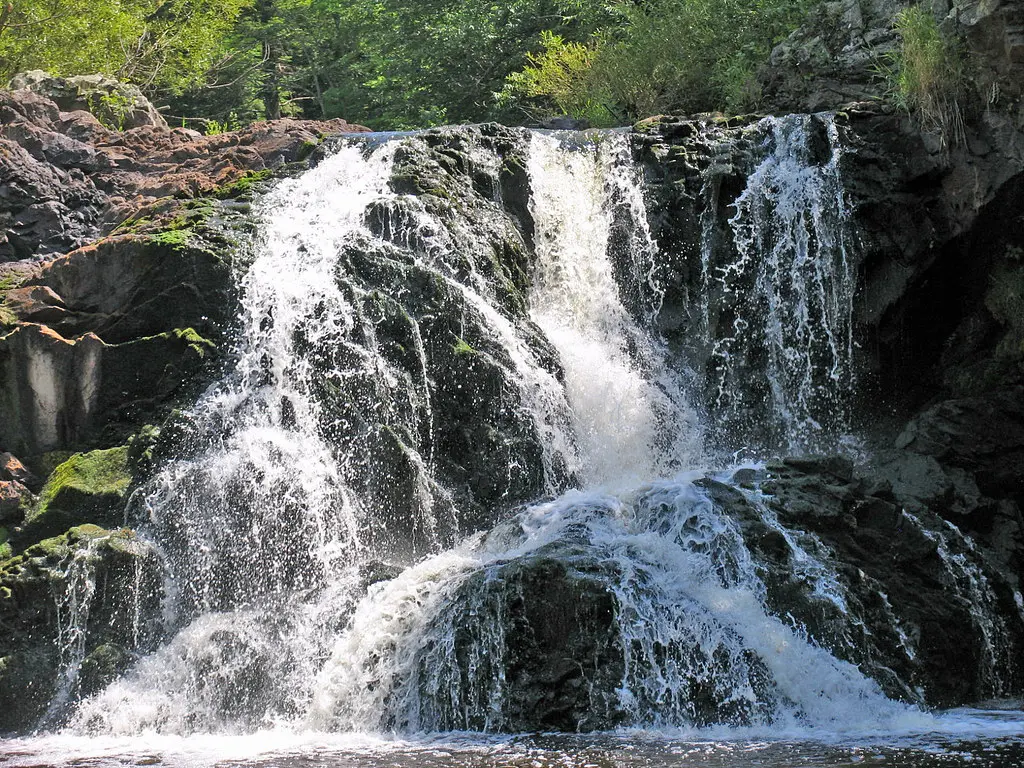
In 2016, the land around the falls was preserved through a joint effort between conservation groups and local governments, ensuring public access and habitat protection. The trail offers interpretive signs explaining the area’s ecology and history, enhancing the experience for visitors. Seasonal changes create different moods—spring melt brings a powerful rush, summer offers a quieter flow, autumn frames the falls in fiery leaves, and winter transforms them into icy sculptures. For those exploring the Ironwood area, Interstate Falls is a short, rewarding excursion into the natural beauty of the western Upper Peninsula.
17. Mt. Zion Scenic Overlook
Important Information
- 📍 Location: On the campus of Gogebic Community College, E4946 Jackson Road, Ironwood, MI.
- 🕒 Hours: Seasonal operations—winter (skiing/tubing) and summer/fall for overlook and disc golf.
- 💲 Pricing: Affordable lift or recreation fees; free access for students and seniors at times.
- ♿ Accessibility: Offers accessible overlook, disc golf, and multi-season recreation.
- 📍 Highlights: Panoramic views, skiing, tubing facilities, and a picturesque disc golf course.
The Mt. Zion Scenic Overlook offers one of the most panoramic views in Ironwood, showcasing the rolling forests of the Gogebic Range and, on clear days, distant glimpses of Lake Superior. Located atop Mt. Zion Ski Hill, the overlook is accessible year-round, drawing both sightseers and photographers. In fall, the vantage point becomes a prime spot for leaf-peeping, as the hardwood forests explode in shades of gold, red, and orange.
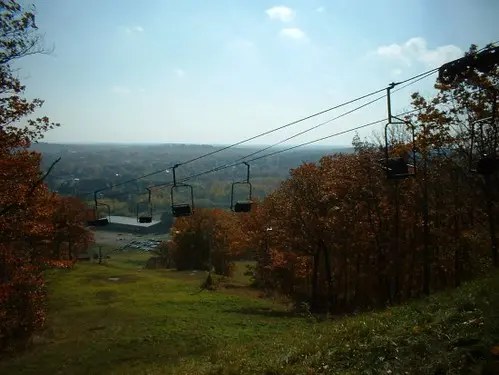
In winter, it’s a serene contrast to the busy slopes below, offering a quiet place to take in the snowy expanse. The site also provides interpretive signage detailing the history of Ironwood’s mining and logging industries, as well as the natural forces that shaped the surrounding landscape. For visitors, the Mt. Zion Scenic Overlook is more than just a photo stop—it’s a place to connect the region’s natural beauty with its historical roots, all in one sweeping view.
18. Interstate Falls Park
Interstate Falls Park surrounds one of the Ironwood area’s most photographed natural landmarks—the 18-foot Interstate Falls on the Montreal River. This park provides public access to the waterfall and its surrounding forest, which straddles the border between Michigan and Wisconsin. The site was officially preserved in 2016 through a partnership between the Northwoods Land Trust and local municipalities, ensuring it remains undeveloped and open for recreation.
A short, accessible trail leads from the parking area to a viewing platform, with interpretive signs explaining the area’s ecology, hydrology, and history. In the logging era, the Montreal River served as a transportation route for moving timber, and the falls marked both a scenic highlight and a challenge for early river drivers. Today, the park is a quiet refuge for hiking, birdwatching, and photography, offering different experiences with each season—spring’s rushing meltwater, summer’s lush greenery, autumn’s vibrant foliage, and winter’s icy cascades. For visitors, Interstate Falls Park combines natural beauty with a preserved slice of the Upper Peninsula’s environmental and cultural heritage.
19. Black River Harbor
Black River Harbor is a rare combination of a Lake Superior harbor and a National Forest recreation area, located just north of Ironwood within the Ottawa National Forest. Once a bustling fishing and logging port, it now serves as a gateway to some of the most scenic waterfalls in the region, including Rainbow, Sandstone, and Potawatomi Falls.
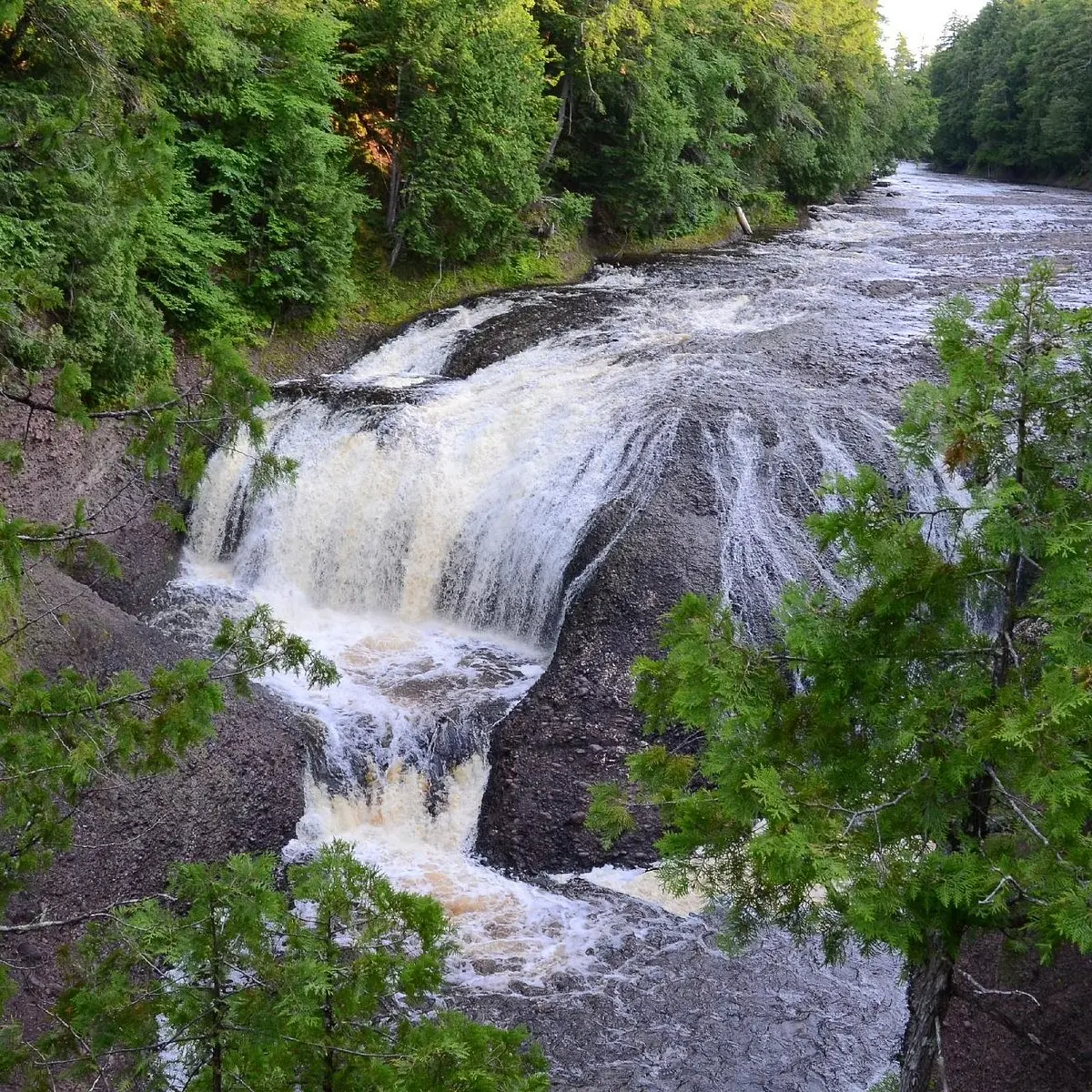
The harbor features a historic suspension footbridge, built by the Civilian Conservation Corps in the 1930s, that spans the Black River and connects visitors to sandy beaches on the opposite shore. Boating, fishing, and picnicking are popular in summer, while the surrounding trails offer year-round hiking opportunities. The harbor’s setting—where the dark, winding river meets the vast, open waters of Lake Superior—provides a striking visual contrast. For travelers, Black River Harbor offers both natural beauty and a tangible link to the area’s working waterfront history.
Interactive Map
Where to Eat in Ironwood
| # | Restaurant | Address (Google Maps) | Rating | Signature Dish / Specialty |
|---|---|---|---|---|
| 1 | Suffolk Street Eatery | 113 S Suffolk St, Ironwood, MI 49938 | 5.0 (Yelp, ~30 reviews) | Ahi tuna poke bowl, Italian Meat Beast sandwich |
| 2 | Mike’s Restaurant | 106 E Cloverland Dr, Ironwood, MI 49938 | 4.5 (Google/Restaurant Guru) | Massive omelets, towering burgers, breakfast sausage |
| 3 | Joe’s Pasty Shop | 116 W Aurora St, Ironwood, MI 49938 | 5.0 (Yelp, ~46 reviews) | Classic Cornish pasties |
| 4 | Olde Suffolk Ale House | 125 S Suffolk St, Ironwood, MI 49938 | ~4.0 (Restaurant list) | Prime rib, meatballs, cozy pub fare |
| 5 | Don & GG’s | 1300 E Cloverland Dr, Ironwood, MI 49938 | — | Steaks, pasta, wraps, salmon entrees |
| 6 | Golden Dragon Chinese Restaurant | 215 S Suffolk St, Ironwood, MI 49938 | ~3.9 (Giftly list) | Authentic Chinese cuisine: stir-fry, dumplings |
| 7 | UP-N-Smoke Southern BBQ | 232 E Ayer St, Ironwood, MI 49938 | ~4.7 (Giftly list) | Hickory- and pecan-wood smoked BBQ, peach cobbler |
| 8 | Bake Superior Bread | 230 E Aurora St, Ironwood, MI 49938 | ~4.9 (Giftly list) | Bagels and butter-top farmhouse loaves |
How to Get to Ironwood, Michigan
Ironwood is located in the western Upper Peninsula of Michigan, right on the border with Wisconsin. While small in size, the town is surprisingly accessible thanks to nearby highways and a regional airport.
By Car
Driving is the most common way to reach Ironwood.
- From Minneapolis, MN: Around 4.5 hours via I-35 N and US-2 E (approx. 220 miles).
- From Milwaukee, WI: About 5 hours via I-94 W and US-51 N.
- From Chicago, IL: Roughly 6.5 hours via I-90 W/I-39 N and US-51 N.
- From Green Bay, WI: Around 4 hours via US-141 N and US-2 W.
By Air
- Gogebic-Iron County Airport (IWD) is only about 7 miles from downtown Ironwood. It offers daily flights to Minneapolis–Saint Paul International Airport, making connections easy from almost anywhere in the U.S.
- Larger airports such as Duluth International Airport (DLH) and Minneapolis–Saint Paul (MSP) are also options, followed by a scenic drive.
By Bus
Indian Trails Bus Lines operates routes through Ironwood, with connections to larger hubs like Milwaukee and Duluth.
Local Transportation
Once in town, most visitors get around by car. Rentals are available at the Gogebic-Iron County Airport, and taxis or small local services operate within Ironwood.
Conclusion
Ironwood is a city where history and landscape are inseparable. The same hills that once echoed with the sound of mining drills now draw hikers, skiers, and sightseers. Its downtown retains architectural reminders of a boomtown past, while venues like the Historic Ironwood Theatre and Downtown Art Place keep cultural life vibrant. Parks, trails, and natural attractions—from Little Girls Point to Black River Harbor—offer year-round opportunities to explore the beauty of the Upper Peninsula.
The city’s mining heritage is preserved not only in museums and memorials but also in the character of its people—proud, welcoming, and deeply connected to the land. Seasonal festivals, community gatherings, and outdoor events ensure that Ironwood’s story continues to grow, shaped by both tradition and new ideas. For travelers, it’s a destination that offers more than just sights; it offers experiences rooted in a sense of place.
FAQ
1. How far is Ironwood from Marquette, Michigan?
Ironwood is approximately 150 miles west of Marquette, Michigan. The drive takes about 2.5 to 3 hours through scenic Upper Peninsula landscapes.
2. What is Ironwood, Michigan, known for?
Ironwood is known for its rich history in iron mining, outdoor recreation opportunities, and proximity to Lake Superior. It’s a popular destination for hiking, skiing, and enjoying the natural beauty of Michigan’s Upper Peninsula.
3. Is Ironwood worth visiting in winter?
Absolutely! Ironwood transforms into a winter wonderland, offering excellent skiing, snowshoeing, and tubing, especially at Copper Peak and nearby ski trails. It’s a great destination for winter sports enthusiasts.


